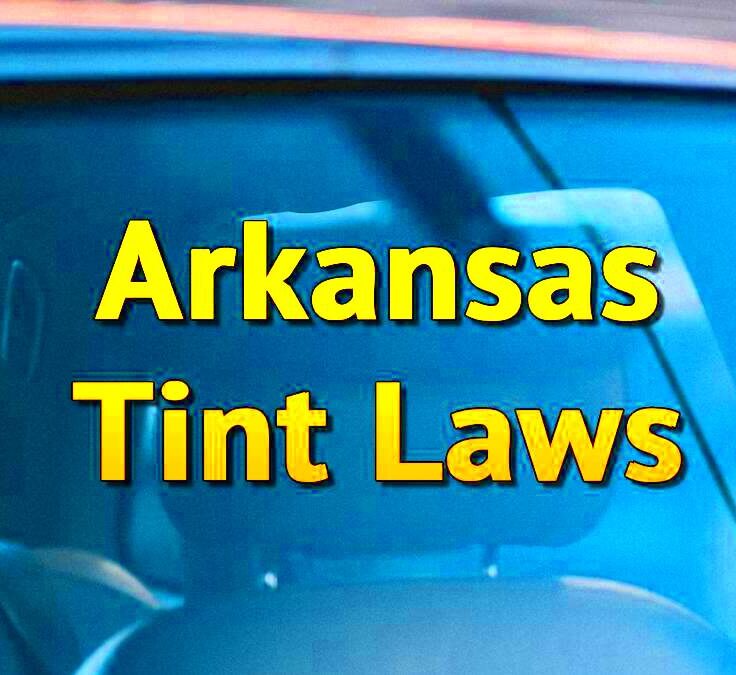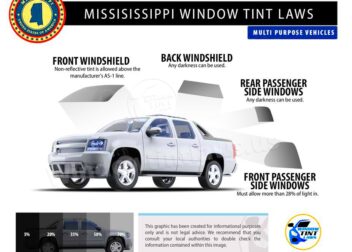Arkansas Tint Laws in 2024 and Legal Requirements
In Arkansas, window tint laws are designed to keep drivers safe while allowing for some privacy and comfort. These laws specify how dark or reflective your window tint can be. Understanding these regulations is essential for all vehicle owners, whether you’re looking to enhance your car’s appearance or improve its interior climate. This post will guide you through the key points of Arkansas tint laws in 2024, so you can stay informed and compliant.
Overview of Window Tinting Regulations
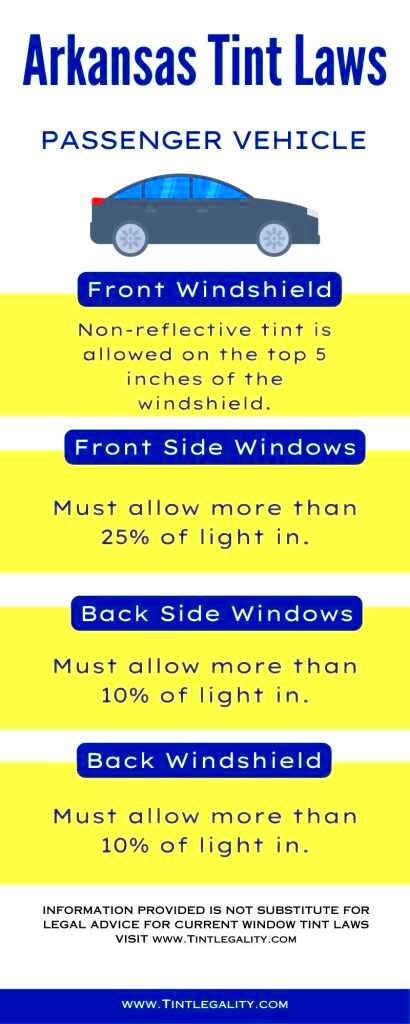
Window tinting regulations in Arkansas aim to balance safety, visibility, and privacy. Here are the main points you need to know:
- Purpose of Tint Laws: These laws are in place to ensure that drivers can see clearly and that law enforcement can see inside vehicles during stops.
- Different Window Types: Regulations vary based on which windows are being tinted, including windshields, front side windows, back side windows, and rear windows.
- Compliance Requirements: Tints must meet specific VLT (Visible Light Transmission) percentages, which measure how much light can pass through.
- Medical Exceptions: Some individuals may qualify for exceptions to the tint limits due to medical conditions requiring additional privacy.
By adhering to these regulations, you can avoid fines and ensure your vehicle remains roadworthy. Make sure to check the specific laws that apply to your vehicle’s windows.
Legal Limits for Windshield Tint
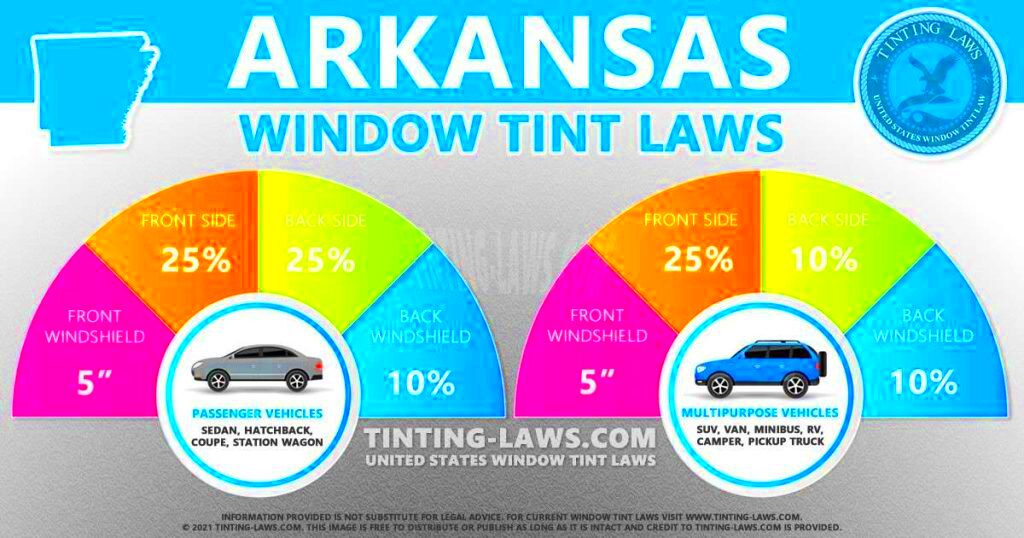
In Arkansas, the legal limits for windshield tint are quite specific:
- VLT Percentage: The front windshield can have a tint that allows at least 25% of light to pass through. This means that you cannot go darker than this percentage.
- Tint Strip: You are allowed to have a non-reflective tint strip at the top of the windshield. This strip must not extend more than 5 inches down from the top of the windshield.
Here’s a simple table summarizing these limits:
| Window Type | Maximum VLT | Notes |
|---|---|---|
| Windshield | 25% | Non-reflective tint strip allowed at the top, up to 5 inches. |
Adhering to these limits not only keeps you legal but also ensures that you can drive safely without compromising visibility. Always remember to check with a professional tinting service to ensure compliance with these laws.
Legal Limits for Front Side Window Tint
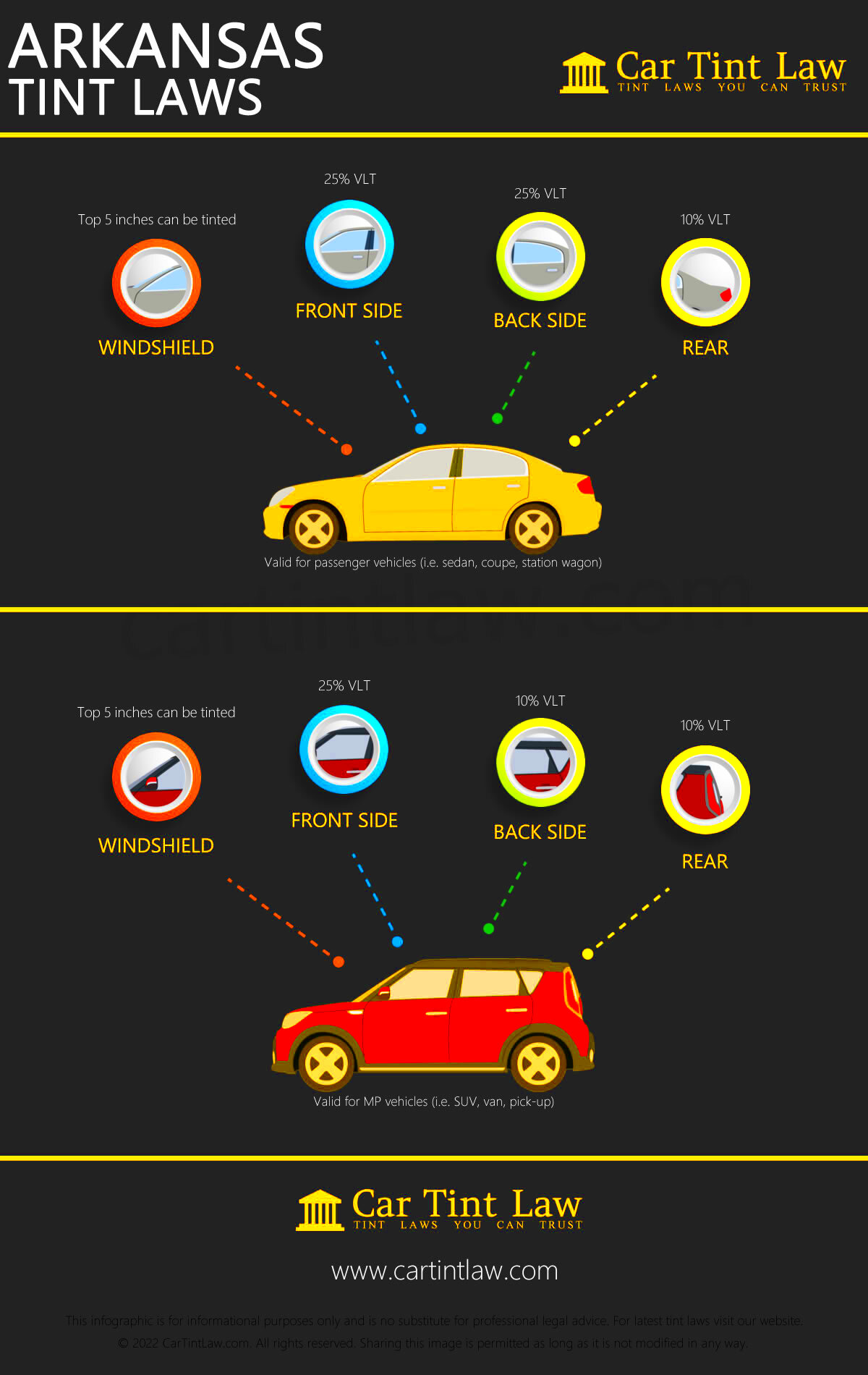
When it comes to front side windows in Arkansas, the laws are clear to maintain safety while allowing some level of privacy. Understanding these legal limits can help you avoid fines and ensure your vehicle complies with state regulations.
- VLT Requirement: The front side windows must have a tint that allows at least 25% of light to pass through. This means the tint can be darker than 25%, but not lighter.
- Reflectivity: The front side windows cannot have a reflective tint that exceeds 20%. This limit helps ensure that other drivers can see your vehicle, especially in low-light conditions.
Here’s a quick reference table for front side window tint limits:
| Window Type | Maximum VLT | Maximum Reflectivity |
|---|---|---|
| Front Side Windows | 25% | 20% |
Remember, violating these limits can lead to penalties, including fines and having to remove the tint. It’s always a good idea to consult with a professional to ensure that your tint meets Arkansas standards.
Legal Limits for Back Side Window Tint
When it comes to back side windows, Arkansas has more flexible laws compared to front side windows. However, it’s still important to know the legal limits to avoid any issues.
- VLT Guidelines: There are no specific limits on the amount of tint for back side windows. You can choose any level of tint you prefer.
- Reflectivity: Like the front side windows, the reflectivity on back side windows cannot exceed 20%. This ensures that your vehicle remains visible to other drivers.
Here’s a helpful summary in table form:
| Window Type | Maximum VLT | Maximum Reflectivity |
|---|---|---|
| Back Side Windows | No limit | 20% |
This flexibility means you can customize your back side windows according to your style preferences, as long as you adhere to the reflectivity rule. Make sure to verify your tint with professionals to ensure compliance with the law.
Legal Limits for Rear Window Tint
The rear window tint regulations in Arkansas are similar to those for back side windows. Knowing the legal limits for rear windows can help you maintain compliance while enhancing your vehicle’s appearance.
- VLT Rules: Like the back side windows, there are no restrictions on how dark your rear window tint can be. You can choose any tint level that suits your needs.
- Reflectivity: The maximum reflectivity for rear windows also stands at 20%, ensuring that your vehicle remains visible on the road.
Here’s a quick overview in table format:
| Window Type | Maximum VLT | Maximum Reflectivity |
|---|---|---|
| Rear Window | No limit | 20% |
This leniency allows drivers to create a custom look for their vehicles. However, it’s crucial to comply with the reflectivity limit. Always double-check your tint with a professional to avoid potential fines and ensure that your vehicle meets Arkansas laws.
Exceptions to the Tint Laws
While Arkansas has specific laws regarding window tinting, there are exceptions that cater to unique circumstances. Understanding these exceptions can help you navigate the regulations more effectively, especially if you have specific needs.
- Medical Exemptions: If you have a medical condition that requires additional protection from sunlight, you may be eligible for a medical exemption. A doctor’s note is usually required to qualify for this exception.
- Law Enforcement Vehicles: Certain law enforcement and emergency vehicles may have different regulations for tinting, allowing for darker tints to provide privacy and protection for officers.
- Limousines and Taxis: Vehicles used for commercial purposes, like limousines and taxis, often have more lenient rules regarding window tinting. However, they must still comply with specific reflectivity limits.
Here’s a summary of the exceptions:
| Type of Exception | Description |
|---|---|
| Medical Exemptions | Requires a doctor’s note for additional sunlight protection. |
| Law Enforcement Vehicles | May have different tint regulations for privacy. |
| Commercial Vehicles | Limousines and taxis may have lenient tint laws. |
It’s essential to consult the Arkansas Department of Finance and Administration or a legal expert to understand how to apply for these exceptions properly.
Penalties for Violating Tint Laws
Violating Arkansas’s tint laws can lead to several penalties, which vary depending on the severity of the offense. Understanding these penalties can help you stay compliant and avoid unnecessary trouble.
- Fines: The most common penalty is a fine. Depending on the violation, fines can range from $100 to $500.
- Vehicle Inspections: Law enforcement may require you to have your vehicle inspected to ensure compliance, which can be an inconvenience.
- Removal of Tint: In some cases, you may be ordered to remove the illegal tint, leading to additional costs for both removal and reapplication of compliant tint.
Here’s a breakdown of potential penalties:
| Type of Penalty | Description |
|---|---|
| Fines | Range from $100 to $500 based on severity. |
| Vehicle Inspections | May be required to verify compliance. |
| Removal of Tint | Order to remove non-compliant tint, incurring additional costs. |
To avoid these penalties, it’s crucial to stay informed about the tint laws and ensure that your vehicle complies with the regulations.
Frequently Asked Questions
Many people have questions about window tinting laws in Arkansas. Here are some of the most frequently asked questions to help you better understand the regulations:
- What is VLT? VLT stands for Visible Light Transmission, which measures how much light can pass through the tinted windows. Lower percentages mean darker tints.
- Can I get a ticket for my tint? Yes, if your window tint does not comply with Arkansas laws, you can receive a ticket, which may result in fines and required changes to your tint.
- Are there any exceptions for tinting? Yes, there are exceptions for medical conditions, law enforcement vehicles, and commercial vehicles, but you must meet specific requirements.
- How can I ensure my tint is compliant? The best way to ensure compliance is to consult with a professional tinting service familiar with Arkansas laws and regulations.
By addressing these common questions, you can gain clarity on Arkansas tint laws and make informed decisions about your vehicle’s window tinting.
Conclusion
Understanding Arkansas tint laws is essential for every vehicle owner to ensure compliance and avoid penalties. The laws cover various aspects, including legal limits for different types of windows, exceptions for specific situations, and potential penalties for violations. By knowing these regulations, you can make informed decisions about your vehicle’s window tint, whether for privacy, aesthetic purposes, or health reasons. Always consult with professional tinting services to ensure that your choices meet state requirements. Staying informed not only keeps you legal but also contributes to safer driving for everyone on the road.
